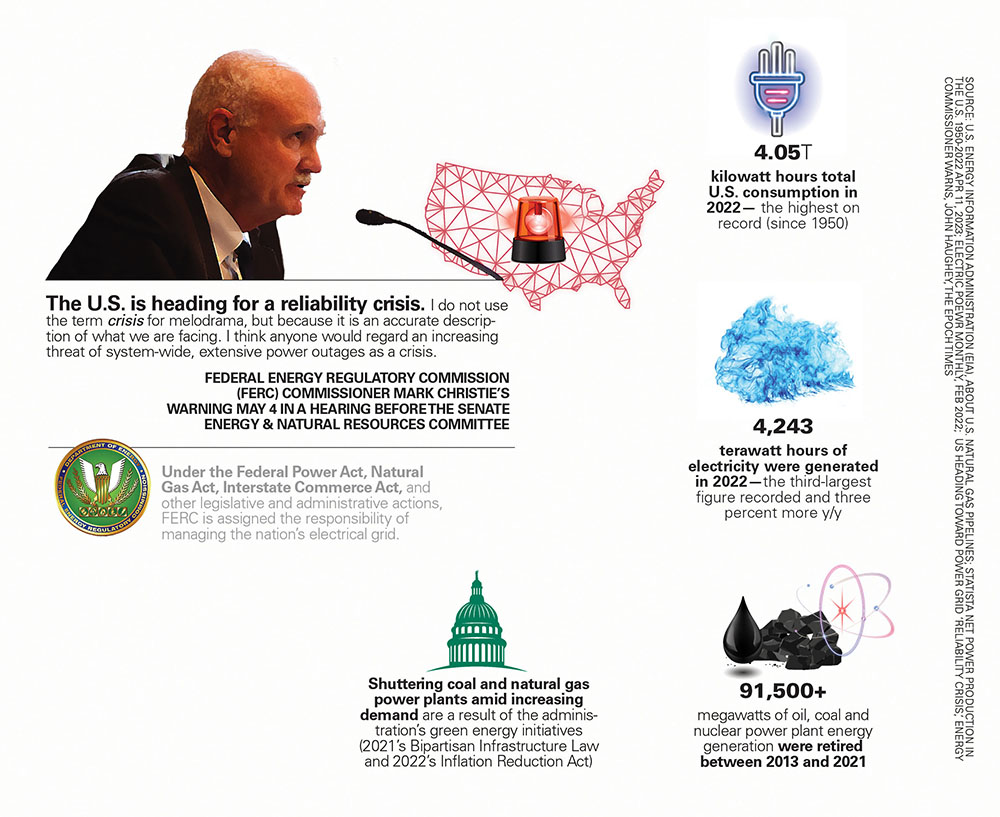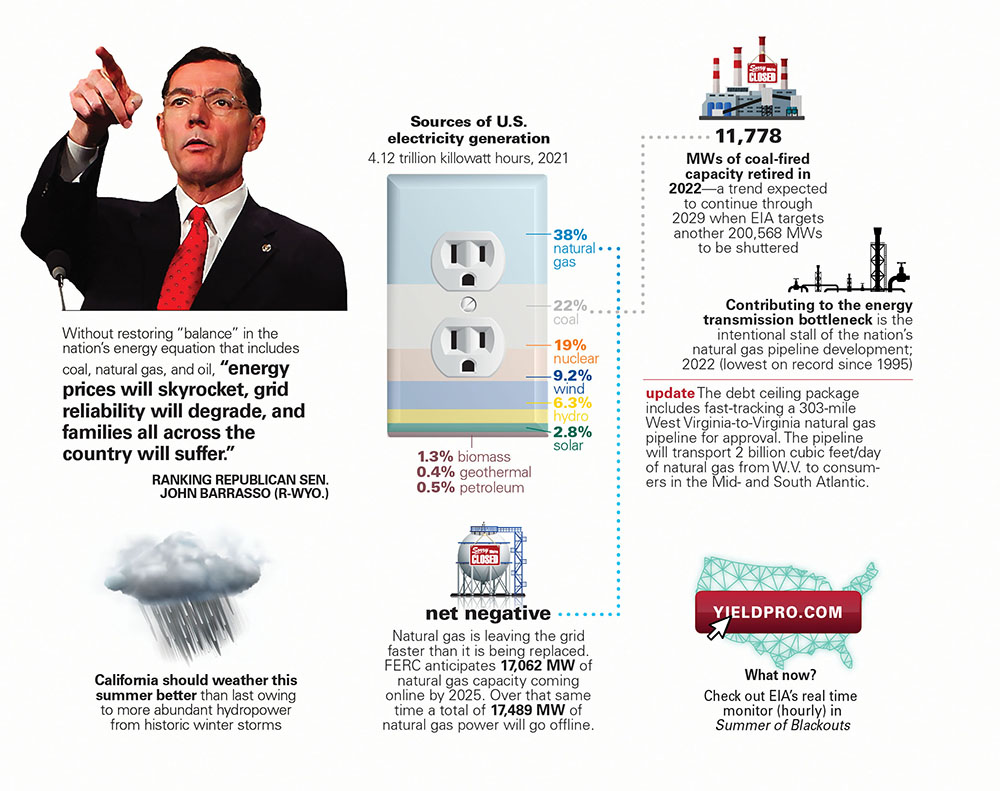
Two-thirds of North America could face power shortages this summer during periods of extreme electricity demand and spiking temperatures, the nation’s grid reliability monitor warned in May.
The North American Electric Reliability Corp. (NERC) found that the number of regions with an “elevated risk” of power shortages has increased as temperatures rise and power plants retire. In a worst-case combination of severe heat and unexpected generation outages, the western United States, most of Texas, and the Carolinas face a heightened risk of rolling power blackouts, NERC said.
“The system is closer to the edge. More needs to be done,” said John Moura, NERC director of reliability assessment and performance analysis.
Overall, the “2023 Summer Reliability Assessment” concludes that grid networks should come through the summer safely given normal weather.
But a repeat of the 2021 “heat dome”—a midsummer siege of record heat across most of the western U.S.—could create grid emergency conditions from the Pacific Northwest and Sun Belt to Texas.
Wildfires and extended periods of poor wind and solar output coupled with extreme heat could also become factors in grid stress, according to NERC, whose industry-staffed committees develop grid reliability standards for approval by the Federal Energy Regulatory Commission.
NERC estimated a 1-in-10 chance of extreme conditions this summer based on past history and forecasts of demand. In that sense, “we are not predicting these conditions to occur” with certainty, Moura added.
The report comes amid a fierce debate over how the country might meet EPA’s proposed rules in May to reduce carbon dioxide emissions from power plants (see infographic, pg. 12-13).
The agency stated that its goal was a balance between accelerating reductions of grid carbon emissions and giving operators enough flexibility to manage a stressful clean energy transition while facing increasing threats of extreme weather. “Preserving the ability of power companies and grid operators to maintain system reliability has been a paramount consideration in the development of these proposed actions,” EPA said.
The new summer assessment is not a signal to slow down the transition from fossil fuels to zero carbon power sources, Moura and Mark Olson, NERC reliability assessment manager, said at the briefing. More wind and solar generation is needed to meet the grid’s increasing power needs as electric vehicles and heating systems expand, Moura said. “We say, bring them on,” he said.
But the pace of the transition must be carefully managed to avoid pushing grid operations toward cliff-edge operating vulnerabilities, he added. “We certainly don’t want to see many fossil units coming off at once,” he said. “The systems simply cannot be changed overnight.”
NERC said regions not expected to face power cutbacks in severe conditions this summer still may need to ask consumers to conserve power or lean more heavily on neighboring regions for surplus power. It pointed to New England and the Southwest Power Pool covering all or part of 14 central U.S. states.
The Midcontinent Independent System Operator, the grid operator for 15 states that largely straddle the Mississippi River, could become vitally dependent on power imports from neighboring states in a heat wave with poor wind power, NERC added. Much of Canada’s power system faces heightened operating risks in severe heat conditions, the organization added.
California appears to be in less of a squeeze with power, however. In a separate forecast the California Independent System Operator said that flush hydropower resources fueled by an unusually wet winter created a “considerable improvement” in resource availability compared to recent years.
Last year, the California grid operator forecast a shortfall in meeting its reliability risk target, and the grid has been stretched thin during extreme heat and summer wildfires.
As the state has closed fossil fuel-fired plants in favor of renewable energy, it has also incentivized more battery storage to help address reliability concerns. California ISO estimates that it will have more than 8,300 megawatts of battery storage online by Sept. 1, up from 3,900 MW in September 2022.
California is poised to weather this summer better than last year owing to more abundant hydropower from record-setting winter storms. Still, in the event of another heat wave the state would need to import more power from other states.

Are retiring fossil plants a problem?
The NERC outlook prompted criticism against the EPA power plant proposal from Jim Matheson, CEO of the National Rural Electric Cooperative Association. “This report is an especially dire warning that America’s ability to keep the lights on has been jeopardized,” Matheson said. “That’s unacceptable.”
Similarly, Rich Nolan, CEO of the National Mining Association, singled out NERC’s comments on another EPA action. The “Good Neighbor” plan, a public health standard issued in March that requires states to reduce power plant emissions that significantly worsens smog conditions in adjoining states downwind. NERC’s outlook said this regulation will likely limit operations in coal-fired generators in 23 states this summer.
“Hoping that the weather cooperates to avoid catastrophic consequences for American families can’t be an acceptable status quo,” Nolan said.
NERC noted that EPA’s smog rule gives operators flexibility in meeting the standards in order to protect grid reliability.
Climate advocates say the red flags raised by fossil fuel interests don’t reflect reality.
“Every time EPA puts regulations on power plant emissions, any time, industry objects and says we can’t do it, and then they do it,” Lissa Lynch, federal climate legal director for the Natural Resources Defense Council, said. “They are not reliable narrators about reliability.”
What now?
Check out EIA’s real time monitor (hourly)
Excerpt Peter Behr, Energy Wire













